
Farai Mugabe, Content & Research, The HR Congress
WHY SHOULD YOU CARE?
As the world keeps changing rapidly around us, organizations need quick and valid reactions from their HR departments. People analytics can provide great help with exploring trends and predicting the future.
Economy 4.0 means change, agility, and transformation. Like all business functions, the way we manage talent has to change to create future-ready organizations. 7 out of 10 HR executives believe that HR is ready for reinvention as per a 2020 Research by the IBM institute of business value in collaboration with the Josh Bersin academy. 1 HR has huge amounts of data that it rarely uses for strategic purposes.2 This data includes demographic data, performance data, compensation, job history, training, employee engagement, staff turnover data, and so on.3 If HR is able to fully use this data to its own advantage, it will be able to generate greater strategic value on people’s decisions.
The world has shifted from being just VUCA (Volatile, Uncertain, Complex, and Ambiguous) to becoming BANI (Brittle).4 Technology and digital transformation have accelerated the data revolution as the world moves in along with the 4th industrial revolution. 5Just like the situation where telecom companies found themselves with huge data that they were not using, HR finds itself in such a space. Chief Executive Officers now expect HR to provide sound and intelligent business decisions. 6To be able to do so and become a winner, HR has to base its decisions on data and empirical business evidence. When HR says employees are disengaged, the CEO will likely ask, “How many people are disengaged?” CEOs expect HR to be able to measure and quantify its efforts.
What is people analytics?
People analytics is a practice of using statistical data analysis and technology on issues related to Human Resources practices.7 Deloitte views people analytics as to the use of measurement and analysis techniques to understand and optimize the people side of the business.3 When using analytics to make people decisions, business leaders can analyse key people metrics such as employee staff turnover, hiring manager satisfaction rate, revenue per employee, and profit per employee to make sound and informed decisions.
Other terms that are associated with people analytics include but are not limited to HR metrics, predictive analysis, correlation, causation, surveys and indexes, measures of central tendency, and graphs.
Benefits of using people Analytics in HR
- Promoting data-driven decision making
Data-driven decision-making is based on ensuring that decisions are made based on verified data. This is an important part of modern management because it allows HR to quantify and measure its efforts and make sound decisions based on empirical evidence. Employee attrition rates, quality of hiring, time to fill a vacancy, profit per employee, headcount levels, and training quality are just a few of the concerns we may track in HR. Sound judgments may be made after HR can examine the reasons why employees are departing using statistical data.
Before a decision or a change is employed, HR can make use of data to base its decisions. This forms a solid foundation for the implementation of people decisions. For example, before introducing a new performance management approach, Google made use of data that is collected from employee feedback. 8
- Assists in determining trends and patterns of behaviour
Data can tell a story better in a convincing manner. People analytics and data-driven HR allow HR professionals to diagnose problems and identify behavioural trends that are related to people. HR would be able to identify why employees are leaving the company, attract top talent, determine employee engagement index patterns, compute the Return on Investment (ROI) from HR interventions, and forecast future trends.
- Solving complex problems
There are quite a few intricate and nuanced issues that HR has historically struggled to understand and describe. The majority of these difficulties were previously thought to be difficult for HR to justify. Employee engagement, organizational atmosphere, conflict levels, and employer brand are among them. HR analytics, on the other hand, can document and quantify such sacrosanct areas so that they can be easily tracked and managed.
Research by McKinsey and Company shows that employees are leaving employment and yet managers do not know why. Given such a scenario, feedback is critical to ensure that a company can understand employee needs and act accordingly.9
- Make the right decision
HR previously made judgments based on instinct. HR was unable to demonstrate the value gained from its actions. HR is often viewed as a business cost centre that provided no substantial value to the company. The use of people analytics enables HR to justify its decisions.
For example, the use of analytics by Adobe helped to justify that the introduction of the Adobe check-in model to manage employee performance was the right decision. Adobe’s managers were spending about 17 hours per employee conducting performance reviews. Huge time was being lost. To radically change that, Adobe adopted a Check-in Model which saved about 100 000+ hours in the performance management process. Adobe’s case is a clear example of how to make performance management more and more agile in line with the changing environment.10
- Swift and accurate decision making
People analytics helps HR practitioners in making swift and accurate decisions as they can quickly troubleshoot HR issues and make the right decision. For example, with people analytics, HR can accurately forecast its manpower needs and know when to resource new employees. Through people analytics, HR can assess employee competencies and suggest possible talent development interventions.
Infusing objectivity
The use of HR analytics will enable HR to be able to enhance objectivity in key decisions such as hiring costs, the cost of industrial relations, assessing employee potential, and employee positioning. This is because the use of metrics and quantifiable data will trigger decision-makers with the ability to remove the subjectivity that is often involved with HR issues such as assessing employee attitude levels and candidate suitability during interviews.
- Measuring the impact of HR interventions
The use of people analytics enables HR to measure the impact of HR decisions. It explains the results of HR initiatives which can be expressed in measurable outcomes. It enables HR to show a causal relationship that is there between HR initiatives and key business outcomes. For example, if Sales are down and HR introducing a training course. The impact is seen through the sales volumes. HR can clearly show how it creates value from the ‘outside in’. HR’s value is seen in areas that used not to be considered traditionally HR outcomes. These areas include customers, shareholders, and revenue. HR is indeed going to the outside. This helps to clearly show that “HR is not about HR” but for the business. 11
The world continues to change at a fast pace. HR needs to provide the right answers at the right time. A lot of global problems such as the great resignation, COVID 19, remote working, managing nomadic talent, dealing with employees affected by war, dealing with socio-economic pressures, and an unpredictable political environment.4 These problems can be better solved if HR makes use of people analytics to explain trends and predict the future. People analytics makes HR a winner.
…
1Accelerating the journey to HR 3.0: Ten ways to transform in a time of upheaval, by IBM Institute of Business Value and Josh Bersin Academy, IBM
https://www.ibm.com/downloads/cas/0LR4N1WK
2 The datafication of HR: Deloitte Review issue 14, by Deloitte, Deloitte Insights
https://www2.deloitte.com/us/en/insights/deloitte-review/issue-14/dr14-datafication-of-hr.html
3People Analytics Solutions: Market Primer, by Kathi Endres and Mathew Shannon
4From VUCA to BANI: Five key HR issues to deal with for HR teams today, by Farai Mugabe, HR Congress
5Talent@Work -Reimagining Talent Management in the new, hybrid world of work, by Mihaly Nagy, HR Congress
6What CEOs want from HR, by Nick Holley, Henley Business School – University of Reading
https://www.danskhr.dk/media/1270/research_-_what_ceos_want_from_hr_sept_14_web.pdf
7Talent performance analysis using people analytics approach, by Fahreza Nasril, Dian Indiyati and Gadang Ramantoko, Budapest International Research and Critics Institute- Journal (BIRCI-Journal)
8Googler Reviews and Development, by Google, Google
https://buildyourfuture.withgoogle.com/resources/grad/
9‘Great Attrition’ or ‘Great Attraction’? The choice is yours, by Aaron De Smet, Bonnie Dowling, Marino Mugaya-Baldocchi and Bill Schaninger
10The story of Adobe’s revolutionary performance journey, by Tiffany Lam, Betterworks
https://www.betterworks.com/magazine/story-adobes-revolutionary-performance-journey/
11HR is not about HR, by Dave Ulrich, Linked Inhttps://www.linkedin.com/pulse/hr-dave-ulrich/
Written by: Mihaly Nagy
Future of Work HR Strategy People Analytics
Previous post

- 11919
- 1
labelNews today2022.05.10.
Google introduces a new employee performance approach called GRAD
Farai Mugabe, Content & Research, The HR Congress WHY SHOULD YOU CARE?As the world is evolving organizations need to keep up with the changes. It is important to re-align employee [...]
Similar posts

labelArticles today2024.07.24.
AI-Powered HR: Strategic Benefits and Practical Applications

labelArticles today2024.06.24.









Post comments (0)